Ask me to excavate my happiest childhood memories, and I’ll unearth the annual August holiday to Poole Harbour. For a decade, it was a ritual for our family: swapping the pebble beaches and arcades of Hastings for Dorset’s golden sands and quiet, green edges. We’d pile into a family car, an overcrowded microcosm of bickering and boredom, for a drive that (although only four hours) stretched time into a dimension only children know. Poole was always the promised land.
Fast-forward to this summer, and I found myself craving to relive those holidays. I’ve spent too many recent years overthinking holidays, chipping away at any sense of spontaneity. Although I worried Poole would not be as I remembered, nostalgia is persuasive. So, with my friend Max, I planned a walk around the harbour – as close to the water’s edge as geography would allow.
Poole Harbour is expansive, it’s the second largest natural harbour in the world in fact and is dotted with islands and threaded by rivers. Its history is ancient, murky with Saxon skirmishes and smuggling tales. Modern Poole is equally layered, a juxtaposition of wealth, industry and nature. It was into this mosaic that Max and I ventured, setting out on a 40-mile trek.
We began west of the town centre, looping anticlockwise. The first stretch led through Lower Hamworthy and Upton, suburban areas but shaped by maritime muscle. Passing the Royal Marines Base, built during World War II, we noted the “No Photography” signs: a small, stern reminder of the harbour’s military legacy. Here was a place once pivotal to D-Day embarkations, its waters bustling with Allied forces.
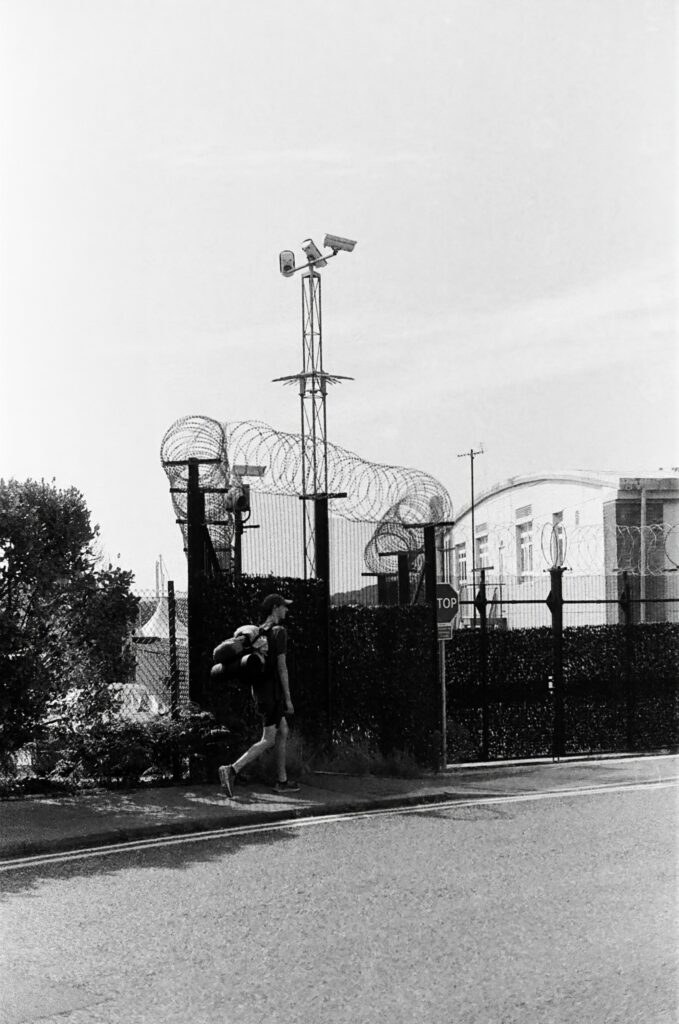
But the suburban sprawl soon gave way to nature. Ham Common unfolded with sandy trails flanked by heather and gorse. The air was salty and the ground springy underfoot, senses from my childhood which I came for.
We pushed onward, following a series of country lanes that got progressively quieter. When we had fully left civilisation behind, we stopped for lunch beneath the dappled shade of a tree.
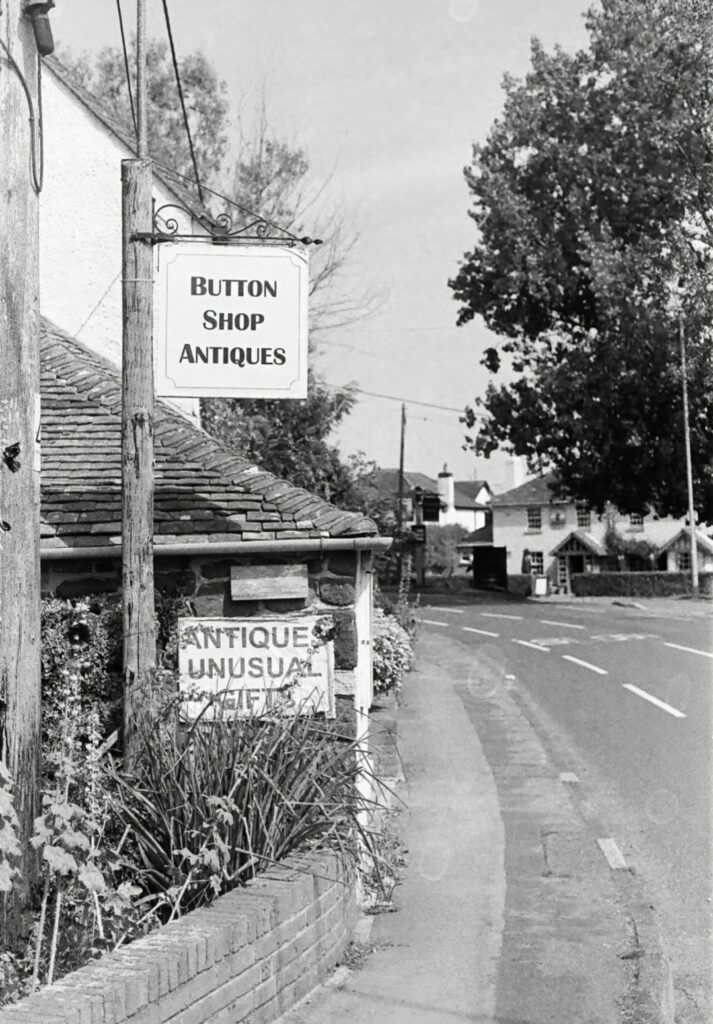
The highlight of the day was reaching Morden Bog, a sprawling heathland dotted with Scots pines. The bog hummed with life, its reeds shifting hypnotically in the breeze, making an incredible whooshing sound.
By late afternoon, we reached Wareham. Here, nostalgia struck hard. The Roman town was where I had kayaked with my father as a child. The River Frome was inviting on this warm summers day, and we dipped our feet in its cool waters. Sitting there, Max and I spoke little; the moment didn’t need words.
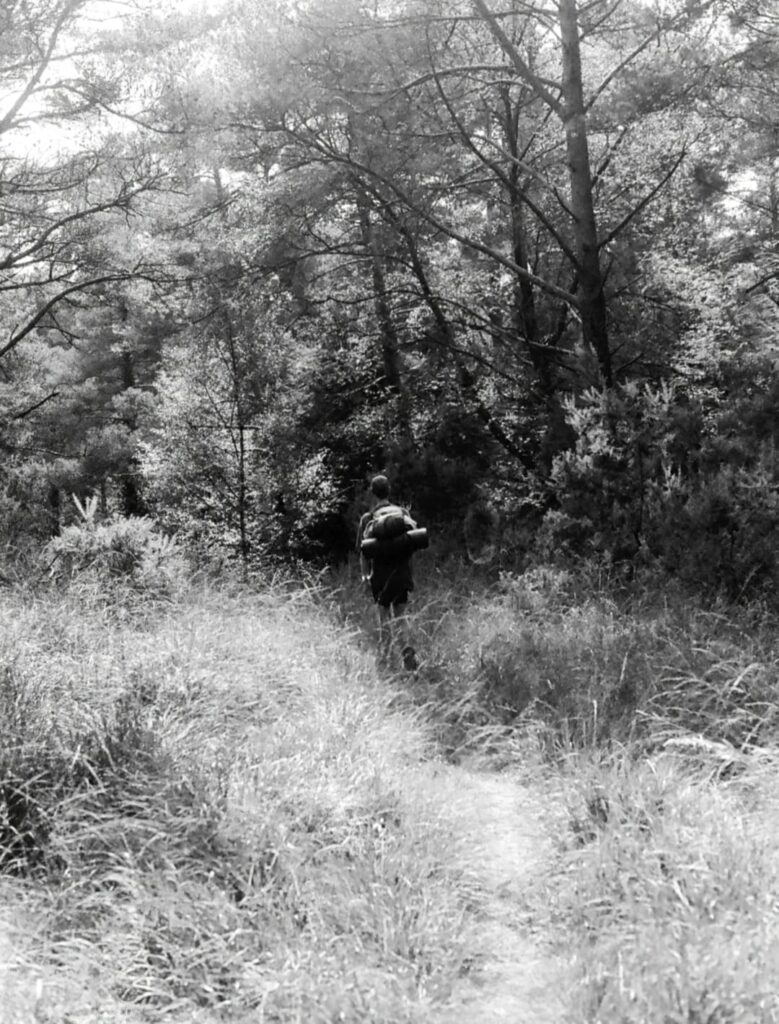
Our campsite that night lay south of Stoborough. It was a modest affair: the site, mostly filled with families, buzzed with life. A group of campers stood out—what my family would have called “all the gear, no idea” types—their shiny new Range Rovers and mansion-like tents complete with TVs and hairdryers. Scattered around were also campervans, relics of the ‘80s and ‘90s, manned by retirees who sat silently in camp chairs, staring into the distance like statues. They watched us intently as we set up, their eyes following our every move, judging our efficiency and methods with an almost imperceptible tilt of their heads. As a child, I’d found their stillness baffling; now, I understood its quiet appeal.
After pitching up, we cooked a dinner as simple as our lunch and had an early night.

Day two began early. The weather was kind: warm but not stifling. We plunged straight into the Arne Nature Reserve, a sanctuary of heath and woodland that seemed endless. Here, the harbour came back into focus, its water glinting through the trees. The sand underfoot softened our steps which forged a path between sharp yet beautiful gorse. Within this, we encountered a few bogs, one of which forced us to improvise—piling sticks to create makeshift bridges.
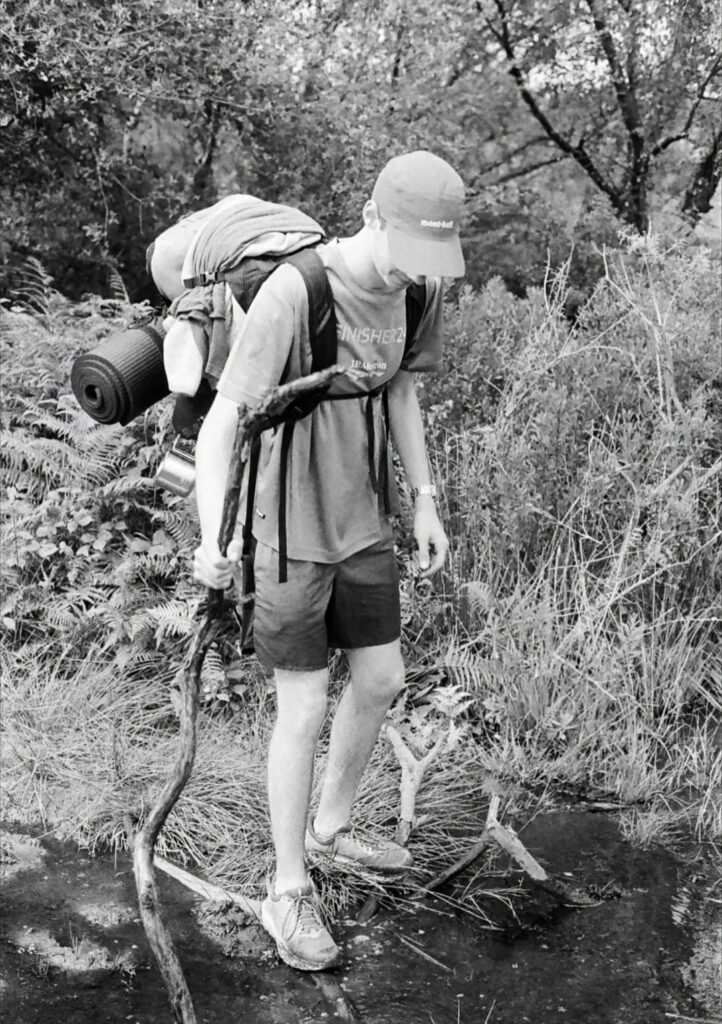
Later, we crossed the private road which harshly cut through the nature reserve, leading to Wytch Farm oil field, a jarring industrial presence amid natural beauty. The sight of towering trucks and oil rigs evoked the American Midwest, furthered by wild horses—an interesting cinematic intrusion into Dorset’s pastoral rhythm.
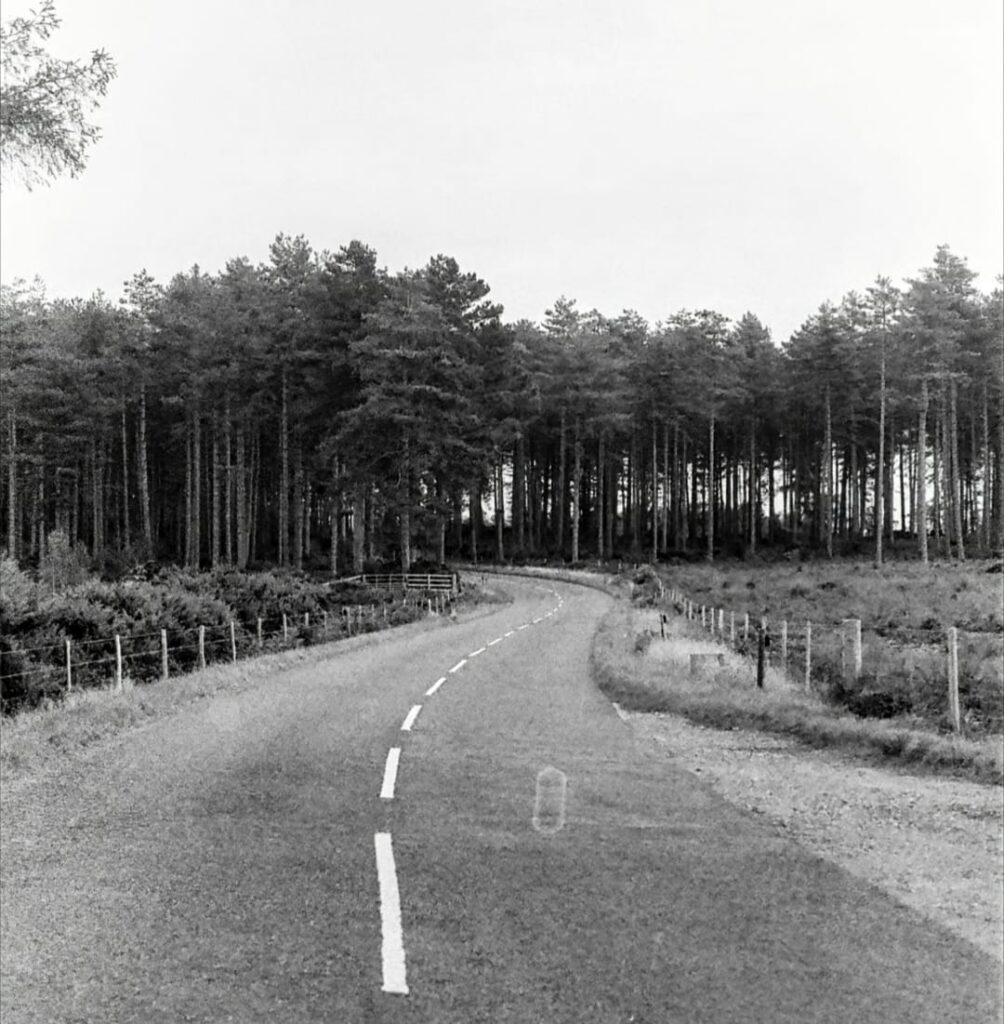
Further along, we hit Goathorn Plantation whose pine trees offered some shaded respite from the sun. We rested against an old gate, not a soul in sight, the quiet broken only by the rustling of needles in the wind. Walking through this was a final hour of stillness before re-emerging into the chaos of Studland. The contrast was sharp. Studland’s beaches swarmed with families, their parasols and coolers a far cry from the solitude we’d enjoyed. We joined the fray briefly, wading into the harbour shallows opposite Brownsea Island. The water was cool, the view familiar. Brownsea—with its scouts and rare red squirrels—loomed large in my childhood memories. It felt fitting to see it again from the same vantage.
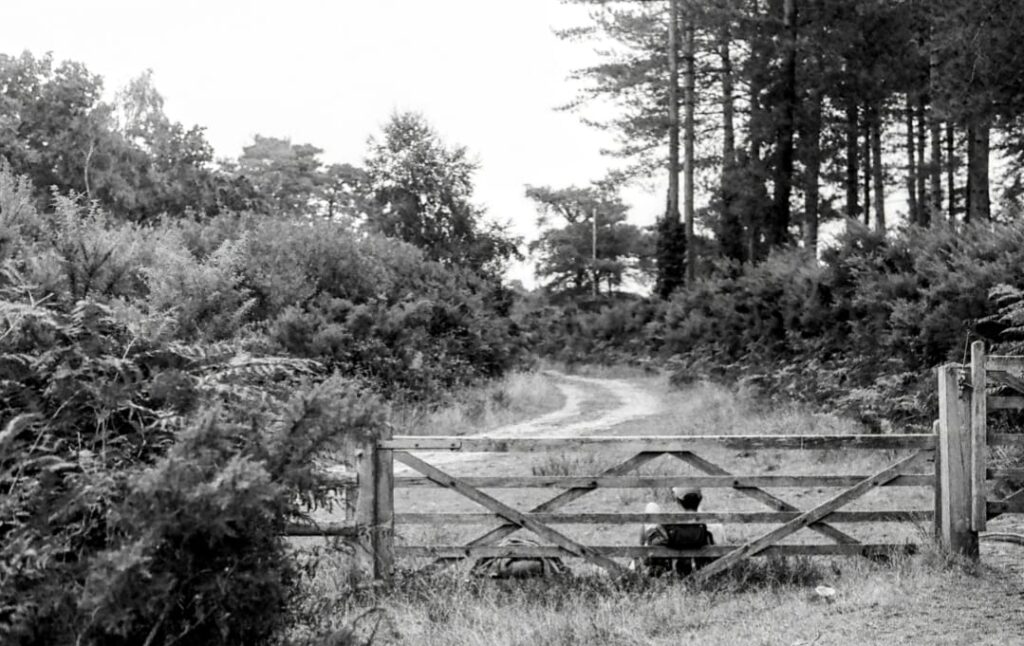
The Sandbanks Ferry carried us across the harbour’s mouth. This chain ferry is a lifeline, connecting Studland to the glitz of Sandbanks, where wealth flaunts itself in the form of glass-fronted mansions and Bentleys. Walking through this enclave of excess felt surreal, a reminder of how far Poole’s pendulum swings.
Our journey concluded as we got back in Poole town. The path home wound past modest family outings—crabbing, kayaking, laughter spilling into the air. It was very pleasing to see families enjoying exactly what I had 20 years before. We ended the day with pizza and conversation at a quiet pub and inn where we found rooms to sleep. The owner critiqued our pool-playing skills but seemed charmed by our story. She was keen to hear about our walk, and it was nice to meet an engaging stranger—a refreshing change from London.
Reflecting on the walk, it made me want to make more effort to revisit places. Like many, I generally always want to try new things or visit unfamiliar places, but revisiting can be just as profound.
Witnessing how elements of Poole’s landscape had changed while still feeling largely constant evoked reflection and comfort. Revisiting sites of happy childhood memories, if you’re lucky enough to have them, can invite a sense of youth back into adults and it was heartening to see others enjoying it in the same way. Or perhaps that’s simply the nostalgia talking…
*The photos were taken on the Minolta x-300 with a 50mm lens. The film used was Ilford ISO400 35mm.
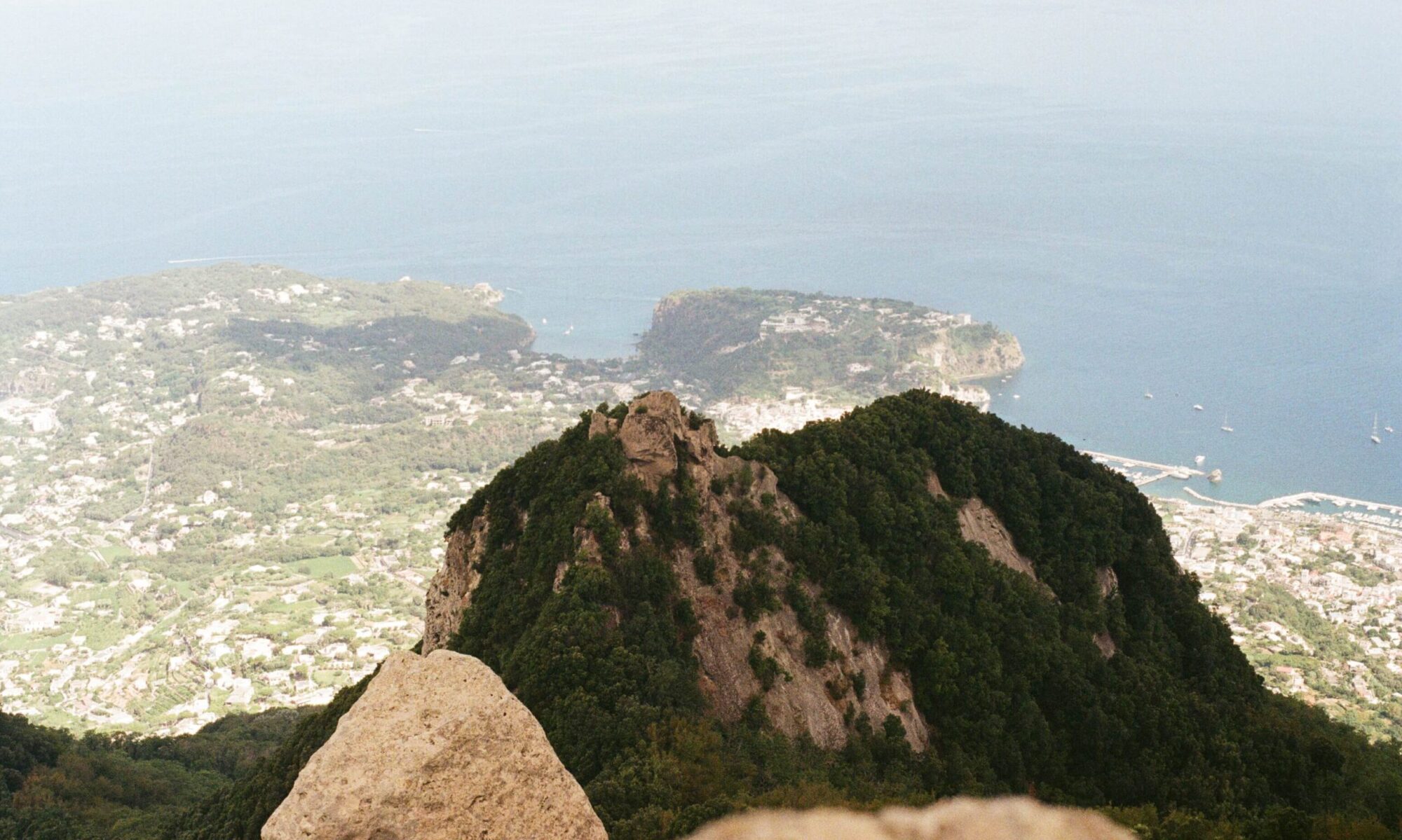
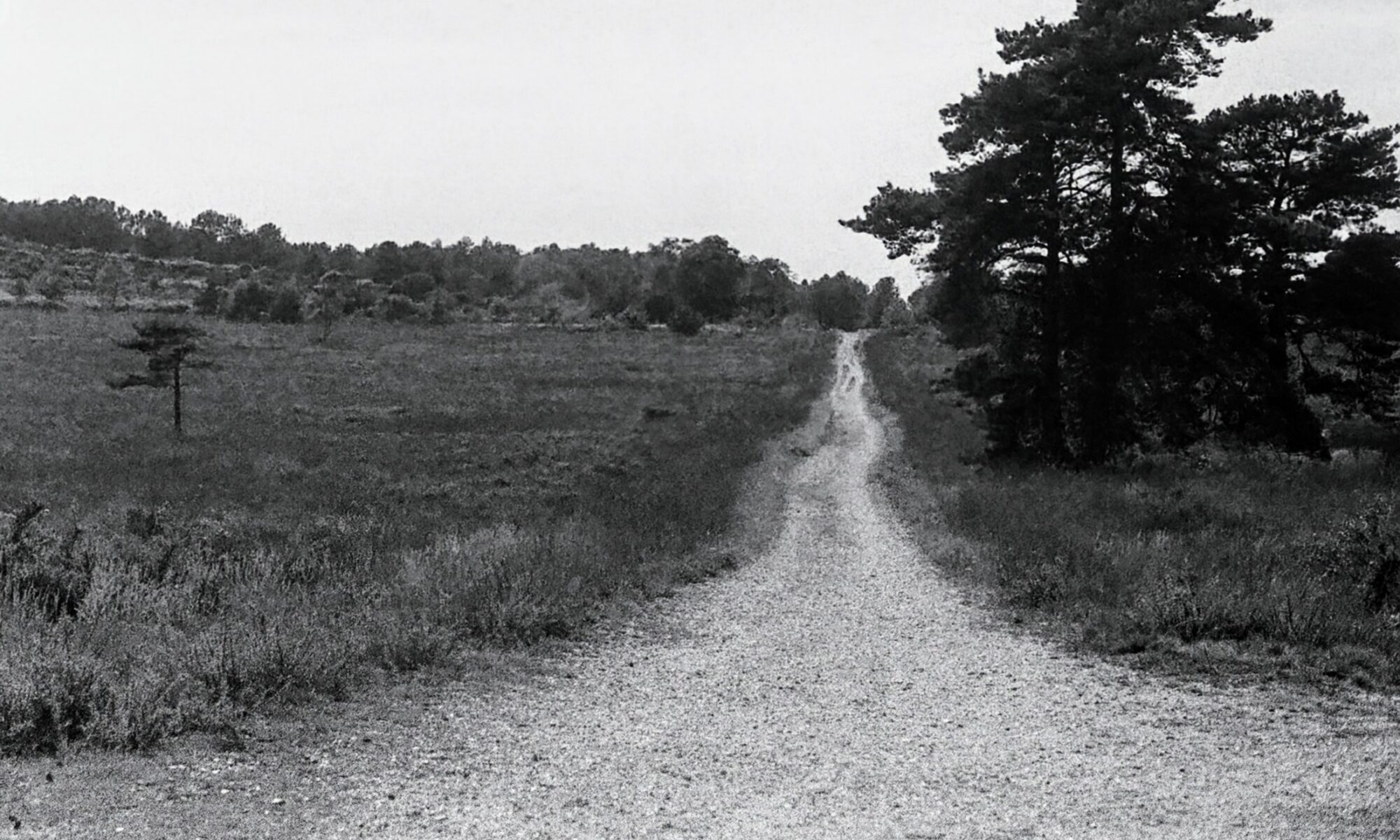
Amazing!
Beautiful – Great adventure with so many happy memories 😘
It’s nice to bring back childhood memories they stay with you no matter how old you get,so glad you enjoyed yours.